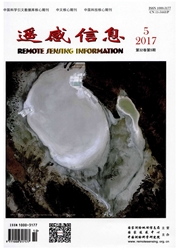

 中文摘要:
中文摘要:
通过对2007年10月现代黄河三角洲芦苇、柽柳、翅碱蓬野外光谱数据处理、分析获得3种植被的特征光谱。经Fisher比率法和方差分析发现芦苇、柽柳、翅碱蓬类内和类间特征均分别位于350~700nm和350~550nm之间。通过波段综合,获得TM相应波段的野外光谱数据,对其分析发现利用(TM2-(TM3+TM1)/2)和(TM4-TM3)组合可以很好地区分出这3种植被,并利用2006年10月的TM数据进行判别试验,经同年野外植被调查数据验证,该方法判别精度为63.3%,为主要建群种快速制图提供了一种可行的方法。
 英文摘要:
英文摘要:
Characteristic spectra of three constructive species(Reed,Chinese Tamarisk,Sea blite) were acquired through processing and analyzing field spectral data measured in October,2007 in modern Yellow River delta.With Fisher ratio and variance analysis method it was found,the within-classes and between-classes features of Reed,Chinese Tamarisk and Sea blite were all located in 350-700nm and 350-550nm respectively.Comparison among arithmetic mean and center wavelength and spectral response function methods,it showed that arithmetic mean method was not only simple but also similar to spectral response function method for re-sampling of field spectral data.Through analysis and comparison of re-sampled spectral data,it indicated that Reed,Chinese Tamarisk and Sea blite could be distinguished by using(TM2-(TM3+TM1)/2) and(TM4-TM3).Then the test was done using Landsat TM data acquired on October 2,2006 in modern Yellow River Delta with decision tree method.Validated field investigation data acquired in May,2006 showed,that the classification accuracy of this method was 63.3%,which was a viable method for quickly mapping main constructive species in modern Yellow River delta.
 同期刊论文项目
同期刊论文项目
 同项目期刊论文
同项目期刊论文
 Application of Remote Sensing Detection and GIS in Analysis of Vegetation Pattern Dynamics in the Ye
Application of Remote Sensing Detection and GIS in Analysis of Vegetation Pattern Dynamics in the Ye 期刊信息
期刊信息
